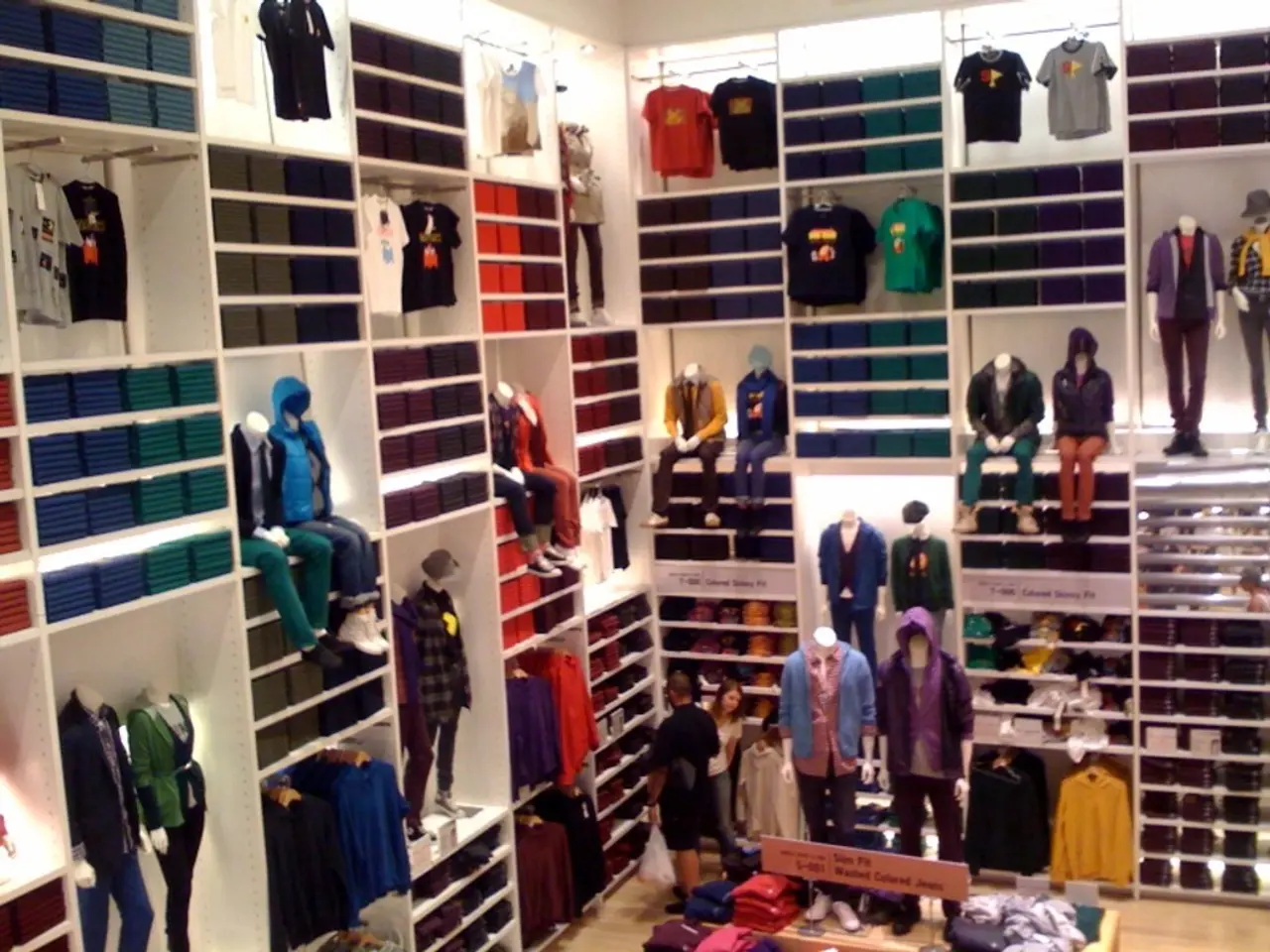Latest Commercial Interior Design Fads Ranked
Top 10 Commercial Interior Design Trends Shaping Spaces in 2024
In 2024, the world of commercial interior design is witnessing a significant shift towards sustainability, flexibility, and technology integration. These trends are aimed at creating stunning and practical environments that cater to modern business needs.
- Sustainability and Green Design
The use of eco-friendly, low-impact materials is a major focus in commercial interior design. Designers are prioritizing green certifications and lifecycle impact assessments to reduce environmental footprints in commercial interiors. This trend includes the use of sustainable materials, energy-efficient lighting, natural ventilation, and low-emission products.
- Biophilic Design
Biophilic design is gaining popularity, incorporating elements like indoor plants, living walls, and natural lighting to enhance the connection between nature and the indoor environment. This design approach aims to improve well-being and reinforce sustainability through the use of eco-conscious materials that are durable and low-maintenance.
- Technological Integration
Smart technology integration is revolutionizing commercial interiors. Systems that adjust lighting, controls, energy usage, temperature, and security based on occupancy and natural light are becoming commonplace. Digital tools such as 3D rendering, BIM, VR, and IoT-equipped smart systems (lighting, HVAC, security) are increasingly embedded seamlessly into workspaces.
- Flexible and Boundaryless Spaces
Modular and multipurpose furniture enable adaptable floorplans that support changing team sizes and activities, fostering collaboration and resource efficiency. Smart booking/usage systems also play a role in creating flexible workspaces.
- Sensory Intelligence
Designs consider occupant wellness through sensory-conscious materials and environments that enhance comfort, focus, and productivity. This includes acoustics, lighting quality, and other factors that contribute to a comfortable and productive work environment.
- Material Innovation
New materials combine durability with environmental responsibility. Examples include resilient flooring that reduces maintenance while using circular or recycled content.
- Sleek Security Solutions
Modern commercial interiors are designed with built-in security features that don’t compromise aesthetics, supporting safe and mindful workplaces.
- Industrial Style Elements
The revival of industrial design using raw materials like exposed brick, metal, and wood merges vintage charm with modern practicality. Often, these materials are chosen for their durability and sustainable finishes.
- Minimalist and Open-Plan Layouts
Clean, uncluttered interiors with open-plan designs help maximize natural light, improve air circulation, and create flexible working environments suited for diverse tasks.
- Durability and Resilience
Products like high-performance flooring designed for heavy usage and minimal upkeep help extend lifecycle and reduce waste, supporting long-term sustainability goals.
These trends collectively foster sustainable environments by reducing resource use and emissions, flexible spaces by allowing easy reconfiguration for different workflows, and technology-enhanced workplaces through smart controls and integrated digital design tools. This integration reflects a modern business’s needs for health, security, efficiency, and adaptability in their commercial interiors.
In addition, acoustic solutions are particularly beneficial in industries where concentration is essential, such as finance or legal firms. Wellness-focused design is being incorporated into commercial interiors, featuring ergonomic furniture, adjustable standing desks, and quiet zones for relaxation. Smart office systems manage energy usage, temperature, and security remotely, offering convenience and cost-effectiveness. The trend towards custom-branded spaces creates a cohesive brand experience for both employees and clients.
Biophilic design, minimalist design with a touch of luxury, and incorporating wellness areas are other notable trends in commercial interior design. Flexible workspaces, featuring modular furniture, open floor plans, and shared workspaces that encourage collaboration, are also on the rise. The world of commercial interior design is rapidly evolving to meet the demands of modern businesses, with new trends emerging to inspire creativity, collaboration, and well-being. Retail and hospitality businesses are adopting custom-branded spaces to enhance customer loyalty and brand recognition.
Below are three sentences that contain the given words in the context of the given text:
- The trend towards custom-branded spaces in retail and hospitality businesses aims to enhance customer loyalty and brand recognition, utilising a combination of interior design and lifestyle elements.
- In residential and home-and-garden settings, the principles of biophilic design can be adapted, incorporating indoor plants, natural lighting, and other sustainable materials to create a harmonious connection between nature and interior spaces.
- As a key player in the commercial fit-out industry, it is essential to stay updated with the latest trends in interior-design, such as technological integration, flexible workspaces, and the use of durable, eco-friendly materials, to cater to the evolving needs of modern businesses.




